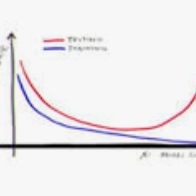In online markets, sellers can maliciously recapture others' images on display screens to utilize as spoof images, which can be challenging to distinguish in human eyes. To prevent such harm, we propose an anti-spoofing method using the paired rgb images and depth maps provided by the mobile camera with a Time-of-Fight sensor. When images are recaptured on display screens, various patterns differing by the screens as known as the moir\'e patterns can be also captured in spoof images. These patterns lead the anti-spoofing model to be overfitted and unable to detect spoof images recaptured on unseen media. To avoid the issue, we build a novel representation model composed of two embedding models, which can be trained without considering the recaptured images. Also, we newly introduce mToF dataset, the largest and most diverse object anti-spoofing dataset, and the first to utilize ToF data. Experimental results confirm that our model achieves robust generalization even across unseen domains.
翻译:在网上市场上,卖方可以恶意地在显示屏上重新获取他人的图像,以用作假图像,这在人类眼中是难以辨别的。为了防止这种伤害,我们建议使用由移动相机提供的配对的 rgb 图像和深度地图,并配有时光感应器。当图像在显示屏幕上被重新捕捉时,也可以在假图像中捕捉被称为moir\'e图案的屏幕的不同模式。这些模式导致反假图像模型被过度装配,无法探测在看不见的媒体上重新捕捉的假图像。为了避免问题,我们建立了一个由两种嵌入模型组成的新型代表模型,这些模型可以在不考虑重新捕捉图像的情况下加以培训。此外,我们最近还引入了 mToF 数据集,即最大和最多样化的反假物体数据集,以及第一个使用 ToF 数据。实验结果证实,我们的模型甚至在看不见的域中实现了稳健的一般化。





